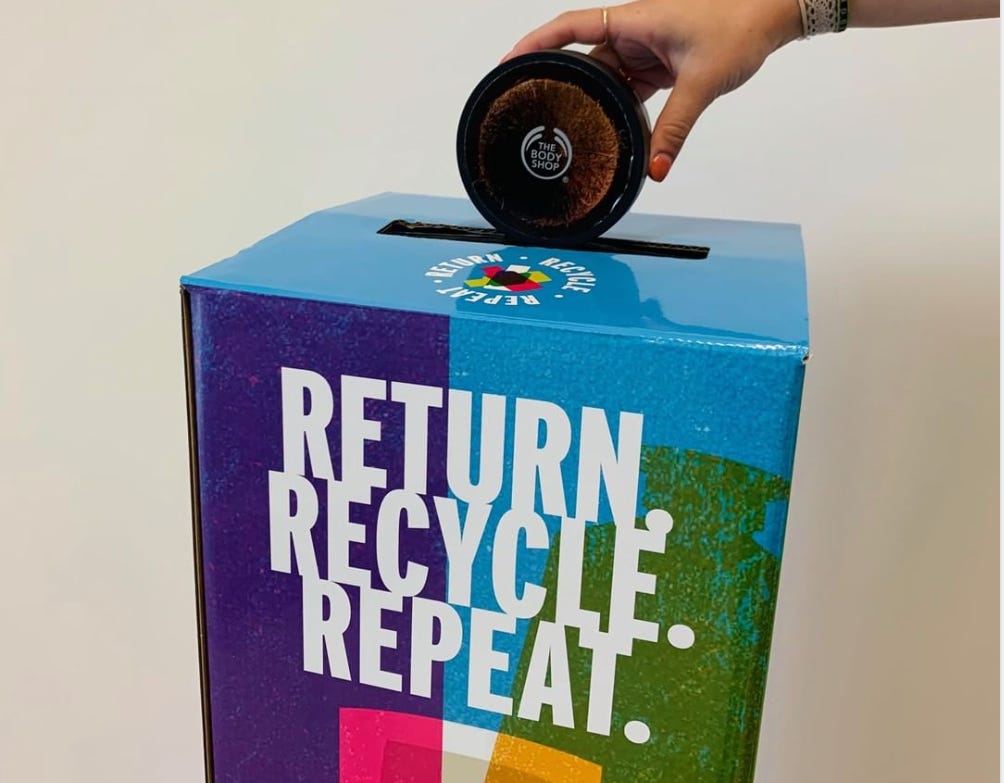Climate Election and Beyond: Storytelling Strategies for Private Sector Sustainability Leadership
Businesses have the power to drive sustainability regardless of election outcomes, and communication is key. To achieve their climate goals, companies need to align their messaging with audience sensibilities and customer expectations — while steering them in the direction of a sustainable society.
Sailing With the Political Winds
Both the private sector and government are needed to address the climate crisis, but the role of business could look different depending on the election outcome.
Both presidential campaigns have avoided focusing on climate, but their stances are clear.
A Trump victory would likely roll back parts of the Inflation Reduction Act (IRA) and expand fossil fuel development (although some industry leaders have asked Trump to keep parts of the law because they benefit from tax breaks).
A Harris win would likely maintain and build on the IRA, making incremental progress but still falling short of necessary emissions cuts.

Either way, businesses that care about building a livable future must position themselves as leaders to build trust and resilience in a fast-changing landscape.
Adaptive Storytelling for Varied Audiences
Understanding your market is critical in gauging how (and how much) to emphasize sustainability in your brand narratives. Climate change is an urgent crisis, but for most people, it doesn’t yet have the visceral feel of one. It’s not a primary concern for many voters — or politicians. Yale/George Mason research shows 39% of voters prioritize climate, with variations depending on demographics and political leanings.
That’s a significant minority, but it’s far from the level that would provide a clear mandate to politicians or businesses. It’s possible the recent hurricanes will drive more voters to focus on climate, but that’s anybody’s guess.
So to engage your key audiences, you need an adaptive storytelling strategy — crafting narratives that resonate with diverse audiences and align with their priorities, whether or not climate is their central concern.
As we’ve written before, the most effective climate messaging doesn’t necessarily lead with climate at all. Instead, successful stories often focus on immediate, relatable concerns such as finances, health, or stability.
Kamala Harris, for example, has taken this kind of strategic approach.
As PBS correspondent William Brangham stated, “I think her campaign believes that if you're a climate change voter and that really matters to you, you're already in her camp.”
So she’s tailored her messaging to those more concerned about finances than the environment, framing the climate crisis as a “pocketbook” issue vis a vis rising insurance costs.
Businesses should apply a similar strategic approach to engage each of their critical audiences, from customers to investors to policy makers.
The companies that will thrive in the coming years are those that proactively tell stories of resilience, progress, and innovation. The key is to appeal to both climate-focused stakeholders and those more concerned with economic resilience, health, freedom, or security — and for B2B customers, efficiency, resilience, or operational value. (Check out the G.R.E.A.T. storytelling framework for a practical way to structure these narratives.)
Now let’s look at five proven tactics to give your stories maximum impact, with real-world examples.
Climate Messaging: 5 Tips for Impactful Communication
Use social pressure
Leverage the power of identity and social norms to align your message with the values and aspirations of your audience. People act based on identity rather than pure rational persuasion.
Highlight that people want to belong to a group or movement—and align climate action with that aspiration.
“We’re all children of the Enlightenment, and so we like to think that the best way to do anything is to rationally convince people of the importance of doing it,” the Environmental Voter Project’s founder and director Nathaniel Stinnett said in an interview with Yale Climate Connections.
Describing his organization’s winning strategy to convince climate-concerned citizens to vote, he continued, “But look at beer commercials. They don’t try to convince you to buy their product because it has the best ingredients. They try to align their product with the type of person you want to be.”
This is great advice for businesses. Instead of only providing environmental data, frame climate-friendly actions as part of who your audience aspires to be — whether a savvy investor, responsible parent, or future-oriented leader.
Simplicity
In a world fraught with information overload, clarity wins.
Business and climate messages often get too complicated by using technical terms, abstract concepts, or loads of data. While it’s tempting to show off your expertise, this can actually turn off important audiences like customers, investors, or policymakers.
The key is to keep things simple and clear so that people outside the field stay engaged and understand the message.
Simplicity isn’t dumbing things down; it’s distilling complexity into something meaningful and actionable. For example, instead of "implementing decarbonization pathways," say, "cutting emissions and saving money along the way."
We spoke recently with Rocky Mountain Institute Chief Storyteller Adam Aston about their policy comms strategies, many of which are key for businesses as well. “Sounding smart isn't about sounding complicated, it's about sounding clear,” Aston said. “Explain something, have it relate to their world and ascend to the meaning and value. This will broaden your influence.”
The Body Shop’s “Return, Recycle, Repeat” campaign offers a prime example of effective, simple messaging. It encourages customers to bring back empty packaging for recycling, making sustainable action easy to understand and participate in. By keeping the message short and actionable, the campaign resonates across platforms while aligning with the brand’s long-standing environmental values.
Specificity and Immediacy
Broad statements about climate action can feel abstract or distant. Effective stories are specific, grounded, and relevant to the present moment. Use concrete examples that show immediate benefits or tangible steps, making it easier for audiences to connect emotionally, for example, "Our energy-efficient systems saved Company X $100,000 last year."
Yara International, a global sustainability focused fertilizer company, launched the "Growers for the Future" campaign to connect with farmers on both emotional and practical levels. The campaign highlights the immediate concerns of succession planning — a critical issue for many farmers — while also addressing long-term goals such as sustainability and economic opportunity. Through storytelling, Yara personalized its message, speaking to both the fears and hopes of farmers, and tied sustainable practices to operational success.
This approach demonstrates how businesses can engage audiences by addressing present challenges while aligning them with broader sustainability objectives. The more immediate and relatable your story, the more likely your audience will engage and take action.
Outcomes over Process
People generally care more about outcomes than the technical details behind them. You want to share enough about how your idea works to make it believe in it, but process-heavy messaging can overwhelm or disengage your audience.
Here’s an example from the real estate world. Christian Ulbrich, CEO of Jones Lang LaSalle (JLL), said in an interview with Strategy+Business that real estate assets risk becoming "stranded" if they do not align with sustainability trends, because financial institutions are shifting away from high-emissions properties.
Rather than discussing complex decarbonization methodologies, JLL focuses on the impact of stranded assets on valuations and financing, making the case that sustainability is crucial to profitability.
This shows how businesses can prioritize outcomes — like financial viability and market relevance — when communicating sustainability goals.
Say it again…and again
Repetition is key to making ideas stick. This is why the biggest and best known brands continue to showcase their brand despite their market dominance.
Even the best story must be repeated across multiple platforms to be remembered and acted upon. This is particularly important in climate communication, where complex ideas require ongoing reinforcement.
Consistent messaging builds momentum and ensures your audience understands and internalizes your core message.
Use repetitive touchpoints — newsletters, social media, investor reports, and interviews — to drive your message home. Craft variations of your core message tailored to different audiences (e.g., customers, investors) but keep the core idea consistent.
Patagonia ensures its sustainability message is heard by integrating it across multiple channels. Through programs like Worn Wear and the Common Threads Initiative, Patagonia encourages repairs, resale, and reduced consumption. The brand also runs bold campaigns like "Don’t Buy This Jacket," shares activist-driven stories through Patagonia Films, and leverages social media to engage followers with environmental causes.
This multi-pronged approach reinforces Patagonia’s values, turning sustainability into a core part of the customer experience and building long-term loyalty
Familiarity breeds trust. Repetition helps solidify your message in your audience’s mind.
By developing adaptive climate messaging, businesses can align their goals with both financial success and environmental impact. This positions your organization as a proactive problem-solver — engaging stakeholders in meaningful ways and leading the charge to address the climate crisis — however the political winds shift.
Editor Credit: Kate Bubacz







